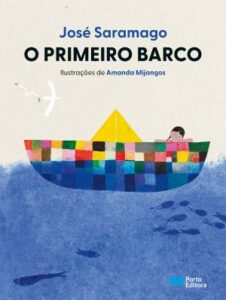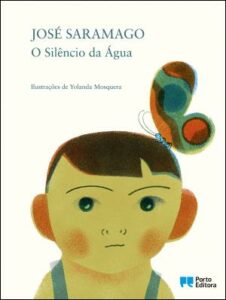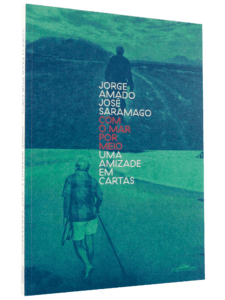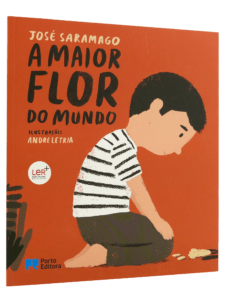What Will I Do With This Book?
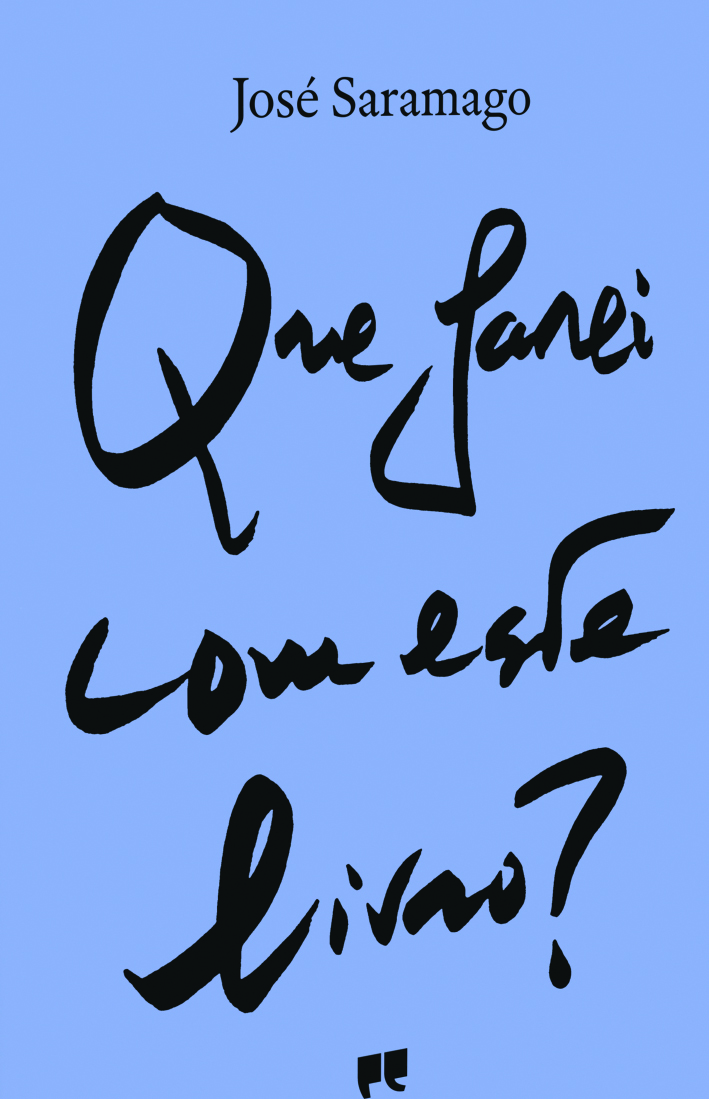
My play was not intended to disfigure or immobilize History, but to dialectically articulate man with his time. I did not intend to mystify or romanticize Camões, but to bring him to us to shed some revealing light on the present
Foundation
Portugal
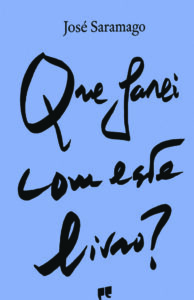
The calligraphy on the cover is by the fado singer Carlos do Carmo
What will I do with this book?, asks Camões, according to José Saramago, when contemplating his poem Os Lusíadas, which was finally printed. This was the question that induced José Saramago to write a theater play whose action takes place in Almeirim and Lisbon between April 1570 and March 1572, between the arrival of Luís de Camões in Lisbon, coming from India and Mozambique, and the publication of first edition of Os Lusíadas. Among the historical characters there are others born of the writer's imagination, all around the edition of Os Lusíadas. “If I were begging in the streets and squares, they might give me money to eat. But they wouldn't give it to me if I said I intended it to pay the bookseller to print the book for me." It will be necessary to read this book to find out if it was Camões or Saramago who spoke so.
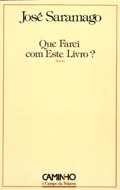
Editorial Path
1980, 4.a ed., 1999
Language
Portuguese
«A pergunta é formulada por Camões, quase no final da obra, e o livro a que se refere não poderia ser outro se não “Os Lusíadas”. Que farei com este livro? Saramago decidiu fazer mais uma peça de teatro, uma obra cuja acção decorre em Almeirim e Lisboa, entre Abril de 1570 e Março de 1572, ou “com menor rigor cronológico, mas com maior exactidão, entre a chegada de Luís de Camões e Lisboa, vindo da índia e Moçambique, e a publicação da primeira edição de ‘Os Lusíadas'”. Entre personagens históricas também há lugar para os tais representantes do povo e para o escritor, todos a acompanhar a edição de “Os Lusíadas”. Ou de um outro livro qualquer. “Se eu fosse esmolar pelas ruas e praças talvez me dessem dinheiro para comer. Mas não mo dariam se seu dissesse que o destinava a pagar ao livreiro que me imprimisse o livro.” Foi Camões ou Saramago a dizê-lo?» (Diário de Notícias, 9 de Outubro de 1998)
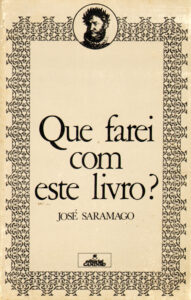
Editorial Path
1980, 4.a ed., 1999
Language
Portuguese
«A pergunta é formulada por Camões, quase no final da obra, e o livro a que se refere não poderia ser outro se não “Os Lusíadas”. Que farei com este livro? Saramago decidiu fazer mais uma peça de teatro, uma obra cuja acção decorre em Almeirim e Lisboa, entre Abril de 1570 e Março de 1572, ou “com menor rigor cronológico, mas com maior exactidão, entre a chegada de Luís de Camões e Lisboa, vindo da índia e Moçambique, e a publicação da primeira edição de ‘Os Lusíadas'”. Entre personagens históricas também há lugar para os tais representantes do povo e para o escritor, todos a acompanhar a edição de “Os Lusíadas”. Ou de um outro livro qualquer. “Se eu fosse esmolar pelas ruas e praças talvez me dessem dinheiro para comer. Mas não mo dariam se seu dissesse que o destinava a pagar ao livreiro que me imprimisse o livro.” Foi Camões ou Saramago a dizê-lo?» (Diário de Notícias, 9 de Outubro de 1998)
Brazil

1998
It includes the plays: What Will I Do With This Book?, The Night, and The Second Life of Francis of Assisi.
Language
Portuguese
Theater that is simultaneously political and existential, of ideas and emotions, José Saramago's dramaturgy, shaped by sharp dialogues and musical rhythm, confirms his mastery in creating situations that reveal ethical and social contradictions. This volume brings together three plays. In the first, upon returning from India, Luís de Camões must negotiate with the obtuse Inquisition and the mediocre court of Lisbon for permission to publish the greatest work of the Portuguese language, Os Lusíadas. In the second, an anti-fascist editor sees the newsroom of the conservative newspaper where he works transform into a microcosm of Portugal on the night of the Carnation Revolution in 1974. In the third, Saint Francis of Assisi returns to Earth in the present day and finds his order transformed into a gigantic and lucrative enterprise.
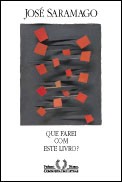
1998
It includes the plays: What Will I Do With This Book?, The Night, and The Second Life of Francis of Assisi.
Language
Portuguese
Theater that is simultaneously political and existential, of ideas and emotions, José Saramago's dramaturgy, shaped by sharp dialogues and musical rhythm, confirms his mastery in creating situations that reveal ethical and social contradictions. This volume brings together three plays. In the first, upon returning from India, Luís de Camões must negotiate with the obtuse Inquisition and the mediocre court of Lisbon for permission to publish the greatest work of the Portuguese language, Os Lusíadas. In the second, an anti-fascist editor sees the newsroom of the conservative newspaper where he works transform into a microcosm of Portugal on the night of the Carnation Revolution in 1974. In the third, Saint Francis of Assisi returns to Earth in the present day and finds his order transformed into a gigantic and lucrative enterprise.
Spain

Alfaguara / Penguin Random House
2022 (Trad.: Antonio Sáez Delgado)
(in one volume) Qué haréis con este libro which includes the complete plays of José Saramago)
Special Edition Commemorating the Centenary of José Saramago's Birth
Language
Spanish
«The memory is the playwright that we all have inside. The distance between what was a person and what he remembers is literature.».
Foundation
Saramago called himself «the involuntary playwright», because he always felt that his contribution to the theatrical genre was marked by unlucky circumstances. But, even so, his creative genius gave light to the five works that come together in this volume: La noche (1979), What is there with this book? (1980), The Second Life of Francisco de Asís (1987), In Nomine Dei (1993) and Don Giovanni o El Dissoluto Absuelto (2005).
With the proper honesty of all his work —although coated with an apparent simplicity—, the author's irony and the acuteness of his reflections shine in these masterful pieces. The great heroes now pass to the elderly men and women who, from the honesty and firmness of their convictions, fight for freedom, justice and a better future.
Set in different times and places that go from the Portugal of the triumph of the Revolution of the Claveles or the renaissance of the poet Camões to the Germany of the Lutheran reform, the Italy of Don Giovanni or the displaced timelessness of a growing company, among them the great questions that characterize the thinking of the Portuguese Nobel Prize are not expressed judgments or sentences. It is part of a dialogue that Saramago maintained forever, from each of the pages he wrote, with his readers.
The critic said:
«Saramago vuelve comprehensible a human reality, with parables supported by imagination, compassion and irony».
Nobel Committee
«A man with a sensitivity and a capacity to see and understand that is very much above what we generally see and understand in mortal communities».
Hector Abad Faciolince
«Saramago is an example, a dignified style of life and literature, which demonstrates the possibility of sailing against the current […]. Your word has the value of an antifreeze, of a personal remedy against the gales of cynicism that envelop us».
Luis Garcia Montero
«I don't know, I don't know, from where Saramago got this diabolical narrative tone, hard and funny at a time, [...] that allows him to tell so much about the heart and sometimes so about the story».
Luis Landero
«Saramago writes novels about myths to demystify them, [...] always to address the reality that surrounds him, to deal with current problems that affect everyone, and so that everything is clear from the beginning».
Rafael Conte, Babelia
«Like Günter Grass or Cees Nooteboom, Saramago aspires to engage with an audience that goes beyond national limits».
The Country
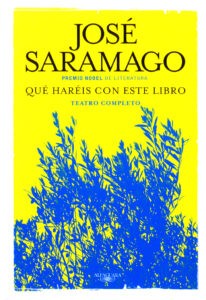
Alfaguara / Penguin Random House
2016 (Trad.: Antonio Sáez Delgado)
(in a volume Qué haréis con este libro that includes the complete dramaturgy by José Saramago)
Language
Spanish
«The memory is the playwright that we all have inside. Put on stage and invent a costume for each being linked to others. The distance between what was a person and what he remembers is literature.»bJosé Saramago
José Saramago called himself «the involuntary playwright» because he always felt that his contribution to this genre was marked by unlucky circumstances. But even so, his creative genius gave light to the five theatrical works that come together now in this volume: La noche (1979), What is there with this book? (1980), The Second Life of Francisco de Asís (1987), In Nomine Dei (1993) and Don Giovanni o El Dissoluto Absuelto (2005). Except for La noche and In Nomine Dei, they were published for the first time in Spain.
With the proper honesty of all his work -although coated with an apparent simplicity-, the author's irony and the acuteness of his reflections shine through in these masterful pieces. The great heroes now pass to the elderly men and women who, from the honesty and firmness of their convictions, fight for freedom, justice and a better future.
Set in different places and times ranging from the Portugal of the triumph of the Claveles revolution or the renaissance of the poet Camões, to the Germany of the Lutheran reform, to the Italy of Don Giovanni or the displaced timelessness of a growing company, among them the great questions that characterize the author's thinking are exposed without prejudice no sentences. All of them are part of a dialogue that Saramago maintained forever, from each of the pages he wrote, with his readers.
Italy
2011 (Trans.: Rita Desti and Giulia Lanciani)
Included in the work La seconda vita di Francesco D'Assisi and other theatrical opere
Language
Italian
José Saramago's theatrical production is animated by its intertwining of poetry, lucidity and power that has an incontrovertible response to his narrator's profession. Il gioco continua di due piani temporali, quello della Storia e quello dell'Invenzione, creat un'infrastruttura que permette ai personaggi di spaziare agilmente di secolo in secolo, di countryie in countrye. And so much fun in the ambient stories that Saramago explores with this quattro pieces. The note follows a writing of the giornale messa in subbuglio, in Portogallo from 1974, from that Rivoluzione dei Garofani that was central in her vita stessa dell'autore. What will I do about this book? I'll make an all-indie leap into four sections for the first time in Portogallo del Cinquecento and follow the journey of Luís Vaz de Camões, the greatest Portuguese poet, in an attempt to give all the stamp to his capolavoro I Lusiadi. The second life of Francesco d'Assisi becomes the great saint I lived in (and in the contemporary world) by showing all his prese with a gross incomprehension with the ordine of Lui Fondato. In Nomine Dei sees anchoring the religion as the main protagonist in the Münster of the XVI century, dove protestanti e cattolici lavano in the blood of the auto da fé le loro divergenze dottrinali.
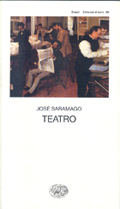
Einaudi
1996 (Trans.: Rita Desti and Giulia Lanciani)
Included in the work Theatre
Language
Italian
«When, between 1977 and 1978, the director of a theater in Lisbon thought about writing an opera in which he was involved in the production of a stage show, he came to see a person without knowing how to practice the technique of theatrical writing, but only one spettatore come tanti altri, lungi dall'immaginare che un giorno avrebbe calcato quel pavement di tavole che, sotto un cielo di corde, macchinari e teloni sospesi, riproduce il mondo’.
All the narrative and poetic writing that is the famous reso, Saramago affianca that drama, in which the creative process is rich in the beginning that supports the rest of his production, deeply intersecting between historical time and inventive time. In La note – di forte autobiografico – la ben note “Rivoluzione dei Garofani”, which in 1974 mise fine alla dittatura in Portogallo, fa da sfondo agli sconvolgimenti, politici e morali, che avvengono nel microcosmo della redazione di un giornale. In Cosa ne farò di questo libro? the scene itself was sposed, always in Portogallo, in the Cinquecento, at the time of Luis Vaz de Camoes, in the Lusitanian period for eccellenza, all prese with the “editorial” difficile to give all the stamp in his capolavoro: I Lusiadi. Anchors the incomprehension, the difficulty of communication, sleeps and motivates him all the time when he encounters the “poverello”, which makes the earth ai giorni nostri, with the Ordine da lui un tempo fondato in La seconda vita di Francesco d'Assisi. And, in fine, In Nomine I gave a response to the incomprehension that farà sfociare in massacri e auto da fé la lotta tra protestanti e cattolici a Munster nel XVI secolo.
